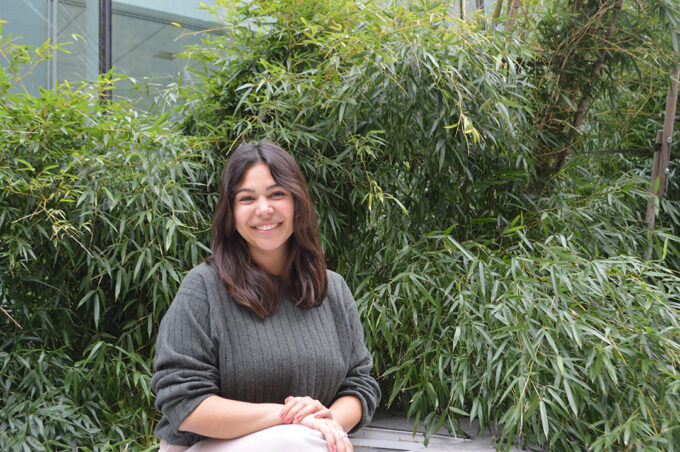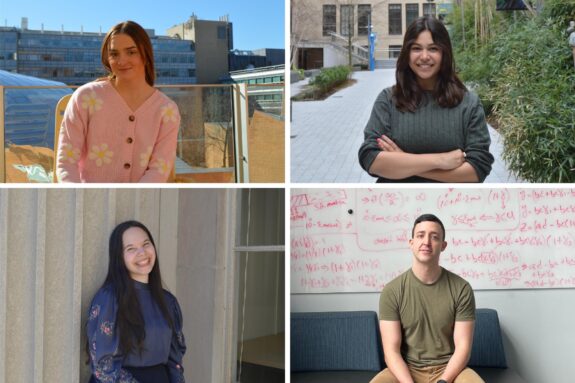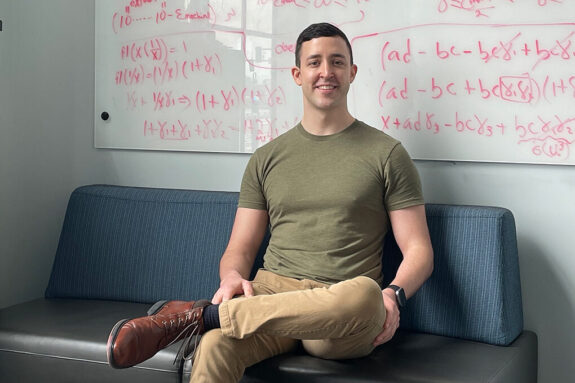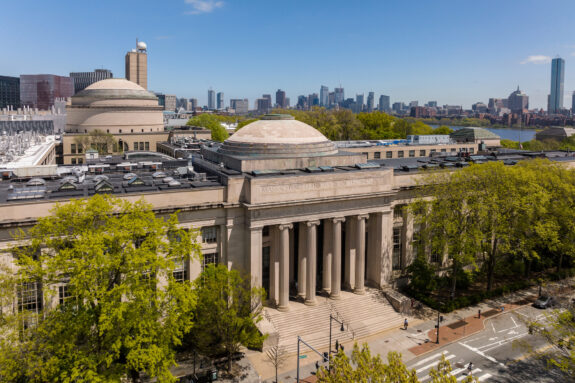Course 1-12 spotlight: Lauren Aguilar finds her path to energy systems

“Understanding upon what scale we can forecast and predict climate change is crucial to build the appropriate level of energy infrastructure.” Lauren Aguilar wasn’t sure how she wanted to approach her studies in energy systems until course 1-12 came along.
Lauren Aguilar knew she wanted to study energy systems at MIT, but before course 1-12 Climate System Science and Engineering became a new undergraduate major she didn’t see an obvious path to study the systems aspects of energy, policy, and climate associated with the energy transition.
“I really had trouble deciding in what way I wanted to study energy—should I approach this problem from, say, a strictly chemical engineering background, a civil and environmental engineering background, a business background? I never officially declared course one as my major, but I had made up my mind to do the course one systems track. I just happened to hold off on declaring until course 1-12 was released. Once it was released, I knew this was the major I was looking for—I even had friends forward me the announcement because it so closely matched my interests.”
Aguilar was drawn to the new major because she could take a lot of the system level classes and gain knowledge in climate. “Having climate knowledge enriches my understanding of how to build reliable and resilient energy systems for climate change mitigation. Understanding upon what scale we can forecast and predict climate change is crucial to build the appropriate level of energy infrastructure.”
A junior when she made the switch to 1-12 during the fall semester, Aguilar is doing a double major in Math. “I was a math major before and now I’m doing a double with 1-12. Math has always been something I’ve enjoyed while 1-12 is more of what I want to dedicate my career towards.”
Looking ahead, Aguilar says she would like to attend graduate school to pursue energy systems research and continue the research path. But for right now, she’s enjoying her 1-12 classes. Her favorite class last semester was 1.067 Energy Systems for Climate Change Mitigation taught by Professor Jessica Trancik.
“The class talks about the different ways in which we can think about energy systems as a tool to mitigate climate change. It helped me develop an understanding of the magnitude of change needed for decarbonization by evaluating different energy technologies against climate policy targets. The class also described the changing behavior of technology over time—an area I hadn’t thought about previously.”
The class kick started Aguilar’s interest in policy and the technical side of doing research for policy recommendations. She even reached out to the professor to ask if she could work in her lab this semester to learn more. Professor Trancik’s lab focuses on evaluating the costs and environmental impacts of energy technologies to accelerate their improvement.
Growing up in Houston, Texas, one of the nation’s biggest oil and gas markets, is another influence for Aguilar’s interest in energy and electricity distribution. “Growing up in Houston gives you an understanding of how big the energy industry is and how important it is to decarbonize that industry. My father and I were in Houston during the 2021 ERCOT Blackouts as well—this experience made me begin to think about the reliability and resilience of electricity distribution grids.” Aguilar was in Houston when the 2021 winter storm failure happened and attributes it as another driving force that sent her down the path.
Aguilar also likes how the interdisciplinary nature of the 1-12 Climate System Science and Engineering program allows her to engage and learn from many different professors from the variety of classes she can take. “I get to take an energy economics class at Sloan, then a physics of renewable energy systems class with course one, and then a science activism class with women and gender studies professors.”
Course 1-12 also brought her to Hawaii during Independent Activities Period (IAP) for 1.091 Traveling Research Environmental Experiences (TREX) to conduct fieldwork. As part of her research experience, she worked on a carbon sequestration project with course 1-12 classmate, Ananda Santos Figueiredo.
“I really love course 1-12 because it allows me to fully dive into all the energy classes that I enjoy.”
Learn more about the new Climate System Science and Engineering bachelor’s degree offered by the Departments of Civil and Environmental Engineering (CEE) and Earth, Atmospheric and Planetary Sciences (EAPS) on the degree program’s website.


